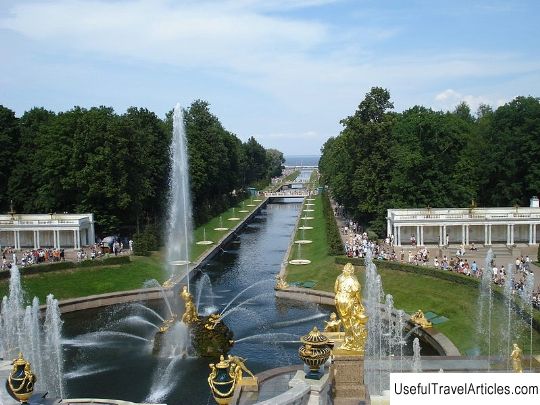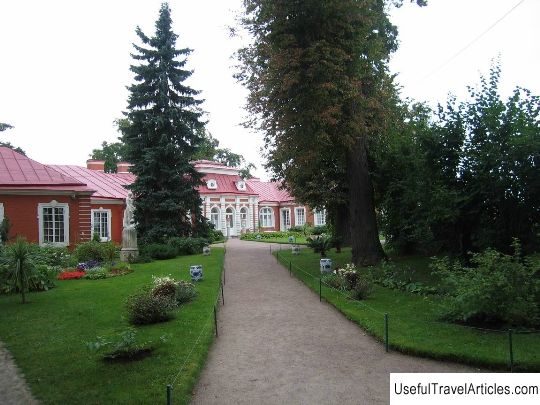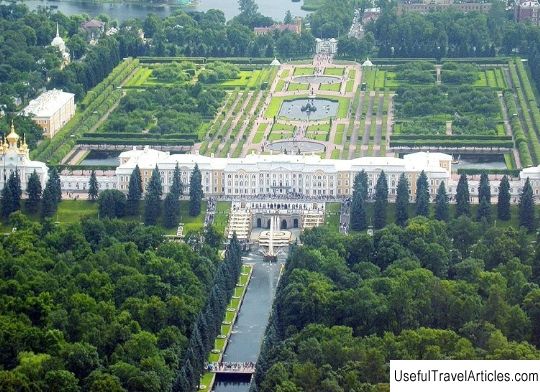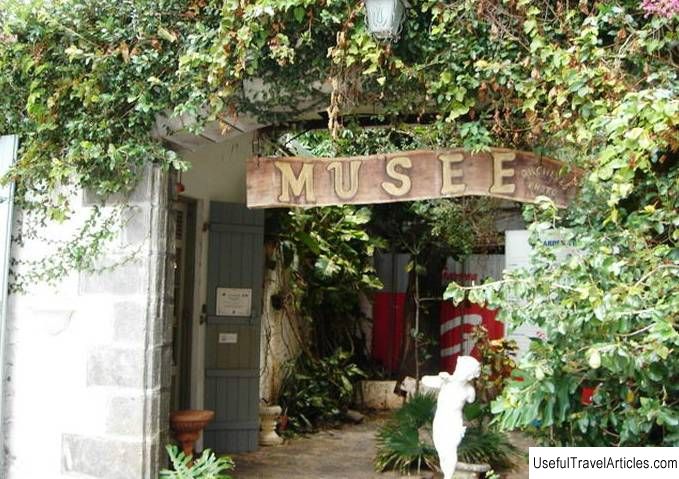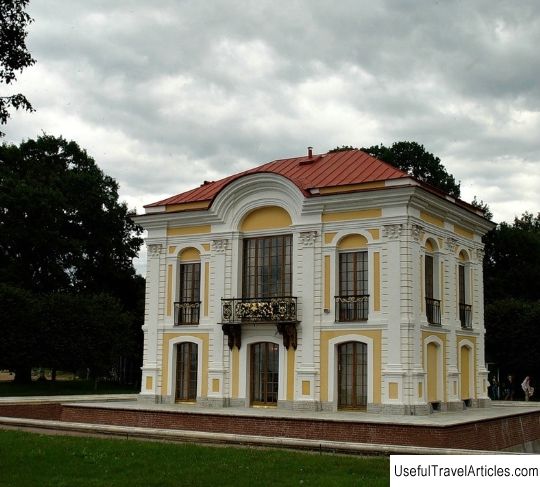Monplaisir Palace description and photos - Russia - St. Petersburg: Peterhof
Rating: 7,8/10 (1201 votes) 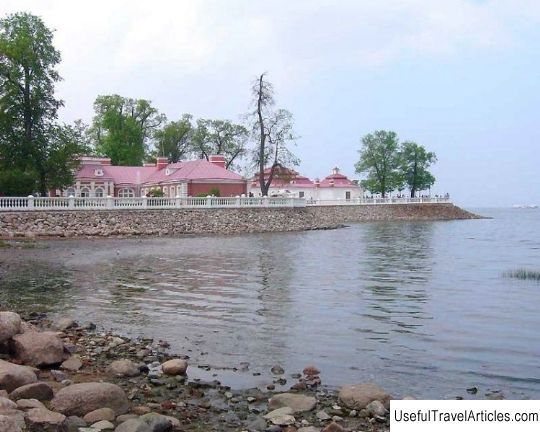
Monplaisir Palace description and photos - Russia - St. Petersburg: Peterhof. Detailed information about the attraction. Description, photos and a map showing the nearest significant objects. Photo and descriptionMonplaisir, or "My pleasure", is one of the most beautiful palaces in Peterhof. It was the favorite palace of Peter I. He himself chose a place for it and developed a drawing. The palace is located just a few steps from the waters of the Gulf of Finland. The construction of the Monplaisir Palace was carried out by such architects as A. Schluter, I. Braunstein, J.-B. Leblon, N. Michetti. The best sculptors, builders, painters, carvers and modelers were engaged in interior decoration. The construction of Monplaisir lasted from 1714 to 1721. The length of the building is 73 m. Thanks to 16 glass arches, all rooms of the palace are very bright. Peter I considered this place to be the ideal home of an enlightened person. The main facade of the building is made in the Dutch style, which is why it is sometimes called the Dutch house. The layout of the building is very rational. The living rooms are adjacent to the ceremonial and utility rooms. In the Monplaisir Palace, like no other architectural structure of the Peterhof ensemble, all the new trends that determined the peculiarities of the art and culture of Peter the Great were reflected. Six living rooms and several utility rooms adjoin the central one, which is a ceremonial one, the room, forming long galleries. Adjacent to the northern facade is the Marine Terrace, lined with Dutch bricks of different colors. Among all the premises of Monplaisir, the Main Hall, the Sea Study, the bedroom of Peter I and the Steam Room stand out. The most beautiful in the palace is the State Hall. The doors of this hall overlook the shore of the Gulf of Finland and the garden. Its walls are faced with oak and decorated with picturesque canvases. The ceiling is covered with multicolored painting. The floor is paved with black and white marble slabs. It was this pattern that became the basis for the design of the drain steps of the Chess Hill. The walls of the Naval Office are decorated with oak panels and images of 13 samples of ships of the early 18th century. A magnificent panorama of Kronstadt and St. Petersburg opens from the windows of the office. The steel box and Peter's navigational instruments are kept here. The steam room was used for its intended purpose. Its floor is made of pine, and the ceiling is made of linden; when the room is very heated, it exudes a pleasant honey smell. It stores things that are necessary for bath procedures: a broom for brooms and a tub. In the corner is an oven with cores lying on it, they were very heated and, like stones, watered with water. The kernels were used because they did not crack or hiss when cooled. Currently, it houses an exposition of women's underwear of the late 19th century. The artistic merits of the Monplaisir Palace provide it with a prominent place in Russian art. Among other things, the premises of the palace house the first Russian collection of paintings by European artists, collected by Peter I, a collection of Dutch faience, a collection of Chinese porcelain, kitchen utensils from the times of Peter the Great and Russian glass. There is a garden in front of the southern facade of the castle. It was founded by the royal gardener L. Garnichfelt. The garden is divided into 4 zones, which are crossed by alleys in the middle. There is a fountain called "Sheaf" at the intersection of the alleys. The center of each zone is the Bell fountain. They are adorned with gilded figures of Psyche, Bacchus, Apollo and Faun. They are mounted on rounded pedestals, in the middle of which water flows in and then flows down like a bell. From this and their name. The Monplaisir Palace is a particularly revered relic of Russian history, thanks to the historical events that he witnessed. Many associates of Peter I met in the palace: ship skippers, foreign ambassadors, Russian merchants; here assemblies were held - congresses of the royal court and ceremonial receptions. Peter I last visited Monplaisir in October 1724. In 1725, there was a reception for the first members of the Academy of Sciences, hosted by Empress Catherine I. In the ceremonial hall of the palace, Catherine II arranged dinners in a narrow circle of entourage. From the middle of the 18th century. Monplaisir acquired the status of a memorial associated with the name of Emperor Peter the Great.                We also recommend reading Central Siberian Geological Museum description and photos - Russia - Siberia: Novosibirsk Topic: Monplaisir Palace description and photos - Russia - St. Petersburg: Peterhof. |
